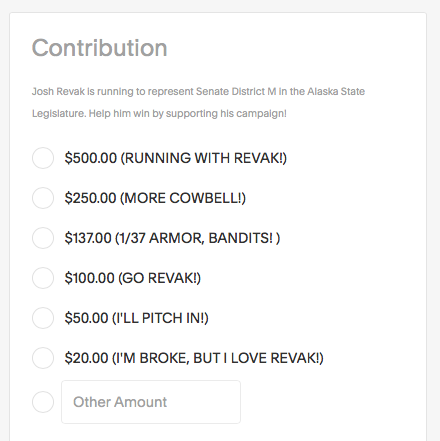A BABY FIGHTS FOR HER LIFE, AND A FAMILY IS BORN
By BOB LACHER
The past is the past. What a cruel reality for a mother of eight children who had been unable or unwilling to keep any of them.
On this late September morning in 2017, long before the sun would rise, addicted to methamphetamine and 32 weeks pregnant, she could think of nothing beyond filling a syringe with a caustic mix of chemicals that she would soon push into her vein.
The past is the past, she must have thought, knowing her history would never be rewritten, her story would never be remade, her life would never be reimagined. For her, life at its end, when it came, would be as ugly and reckless and shot through with despair as all of it had been. What was the point, she thought to herself; hope was for dreamers. Somewhere within that act of surrendering must have been the place where every bit of what makes us human was washed away.
The needle had barely delivered the drug, the familiar rush just beginning to inflict its euphoric destruction to mind, body and womb when rhythmic contractions signaled an induced labor.
She knew the feeling all too well by then, and dreaded the pain that would disrupt her morning. Soon her contractions rapidly merged into one long, continuous, dull ache that threatened to consume her.
A second syringe seemed a good idea. This time it would be heroin. As the mother recounted her story, she believed the baby was unlikely to survive so premature, especially without medical care…and maybe that would be all the easier in the end. Maybe the heroin would allow her to feel nothing of it. She could not remember who among her friends prepared the heroin and eased it into her arm.
The labor of methamphetamine addicted mothers is often induced by a fresh dose of the drug. In an extremely fast process known as “precipitous labor” the baby came quickly. When it did, the mother faced more choices than just seeking medical care or allowing her child to die. Warrants for her arrest for past crimes were active. In her own words, she feared prison time if the authorities came looking around. Losing a baby was the easier choice.
She birthed in a bathtub at a friend’s house, a house frequented by other addicts and those who prey on them. Someone tied off the umbilical cord with string and helped wrap the baby girl in some clothing. The mother held the tiny, unresponsive package and waited.
Hour after hour passed. The baby was struggling to survive, its breathing shallow and irregular. The apnea was a result of undeveloped lungs, the absence of any intervention to clear them, and a bloodstream laced with marijuana, opiates, methadone, amphetamines, cocaine, and benzodiazepines.
At some point during the day the husband arrived at the house. He was not the baby’s father but no one would know this until much later.
The story gets less sure here, and it’s uncertain who among them, as the evening wore on, was advocating for life and some measure of medical intervention. An ambulance coming, with all those people in uniforms asking names and writing them down, was out of the question. At some point arguing ensued. Those pushing for medical care prevailed.
Just after 10 pm a taxi arrived at the hospital carrying the husband, one of his friends, and a small package. From all accounts the ER was brimming with activity. The code called out… “Pediatric emergency” was anything but typical. A premature newborn brought in hours after birth is an unusual occurrence.
Still blue and having great difficulty breathing, the four-pound, two-ounce greyish blue bundle of weakly heaving humanity was given every ounce of the emergency room staff’s cool-headed expertise. The tiny baby girl was stabilized. She was given a fighting chance to make of it what she could.
The State of Alaska’s Office of Children’s Services was alerted and took custody that very day. She belonged to all of us now.
The week that followed was a tough one. Battling withdrawals of multiple drugs is especially challenging for premature newborns. In a struggle for life, the baby would lose 15 percent of her body weight, dropping to three pounds, eight ounces before real recovery began.
That same week a call went out from the OCS to an Anchorage couple that had for some time been waiting for an adoption opportunity. They were invited to come meet the baby girl, on the books as patient number 175, a baby girl that was, for all intents and purposes, a “hospital surrender,” a phrase that doesn’t fit anywhere in the mind’s quick process of making sense of strings of words.
The couple visited the hospital. Covered in dark hair from head to toe as a result of prematurity, the blue in her face was gone, replaced now by a life affirming blush. She had eyelashes that could grace the cover of a glamor magazine and they outlined her exceptionally large brown eyes in a storybook perfect way. The young couple immediately fell in love. Over the next few weeks they would visit the baby many times in the hospital. They quietly named her Isabelle Grace but kept this to themselves. They went home and started making a room for their first child. For the first time in their lives they talked about “family” plans.
The road to adoption is often long and complex, an emotional maze that can only be navigated by leading with your heart. During the next two years of foster parenting by the young couple, the biological mother was given several chances to kick her addictions and regain control of her child, but a severe and crippling drug overdose ended all of that. The next sharp curve in the road was the husband discovering through DNA testing that he was not the father.
The State of Alaska undertook a months-long search for the biological father, then more DNA testing, then a new father was confirmed, this time with interested grandparents and a drug habit of his own, and more chances for him to get clean and get it all right, and more hearings and calendars littered with promises broken and deadlines missed.
Each time, each new gut-wrenching turn, was another chance to lose the baby back into the vice infested abyss from which she had just barely emerged.
Steadily through the storms the couple kept their focus on the only thing that mattered. Isabelle Grace would have her day in court. It would be a day of certainty in a process that had been remarkable in its uncertainty.
It didn’t matter that the morning of Dec. 4, 2019 in Palmer was tightly bound with fog so dense you couldn’t see three city blocks ahead. The pall of greyness would suppress nothing of what was about to happen in Court Room 6. Though all courtrooms in Alaska see their share of adoptions, only Palmer has an official “Adoption Day,” a day dedicated to the business of giving official legal status to minors and parents who ask for it.
On this still, cold December morning, the adoptions of 43 children would be attended to by four judges in four courtrooms. In hearings that are often back to back, new parents are peppered with questions about what it means to take on responsibilities that will surely change their lives.
The young couple seemed to hold their own during their turn in front of Judge Stohler, maintaining at least a veneer of composure as a list of questions put to them by their legal counsel examined the weightiness of the promises being made and to whom, words that would frame a lifetime of commitment to this child who would finally, and forever, be named Isabelle Grace.
All emotions were on display, the sum of two long years where the couple had put their hearts in the hands of others and trusted that their souls would not be crushed. In the long list of questions asked of the couple, one in particular seemed to move the ground beneath them: “…have bonds of love and affection formed between you and she, does she look toward the two of you as her parents or the people who will be taking care of her from here on out?”
With tears streaming down the new mother’s face and her husband appearing not much better, Isabelle was assured by her new parents that a life that began in such darkness and peril could be full of hope.
That day in Courtroom 6 they made promises to Isabelle that would last her lifetime, promises that the story of her life would be remade and reimagined, and that her past would never be her future.
Bob Lacher, a Palmer author, shares his thoughts about his new granddaughter, Isabelle Grace. He is the author of Alaska Raw, a true-adventure book, the first chapter of which ran as a series in Must Read Alaska earlier this year. The book is available at local bookstores, Barnes & Noble, and Amazon.









